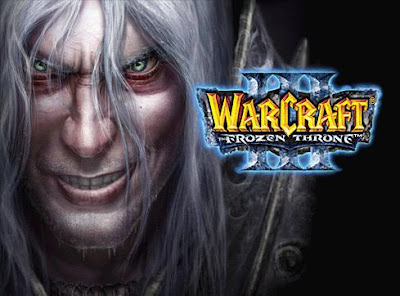Gameplay
Much like the original Defense of the Ancients title, Dota 2 combines the real-time strategy element of traditional top-down perspective, while also incorporating the leveling and itemization system of a role playing game. Players assume the role of a unit categorized as a "hero", who through hostile interactions, may progress to a maximum level of 25. The basic setup of Dota 2 places two strongholds with "ancients" at opposing ends of an evenly-balanced map with multiple connecting regions identified as "lanes", in which enemy units primarily traverse, while also combating powerful defensive towers along the way. Players are split into two teams, ideally in a five-on-five format, to compete as the primary defenders for each ancient.
The overall objective of each match is to battle through the opposing force's defenses, in order to arrive at and destroy the opponents' ancient. The towers and stronghold defenses are invulnerable to attacks so long as the farther distanced towers still stand. Periodically, groups of weaker infantry units commonly called "creeps" are spawned, which move along their lane until they reach an enemy unit or structure, which they will then attack.
Defeating enemy forces grants a distributed amount of currency of gold to the offending team, with the greater portion being retained by the player who made the final blow. While also gaining gold, the players will gain experience as well, which accumulates to gain higher levels. The greatest proportion of gold and experience comes from destroying higher priority forces, such as enemy heroes and towers.
Dota 2 will utilize Valve's Steam software in order to provide social and community functionality for the game. Steam accounts will save personal files and settings on the online accounts using the Steam Cloud. Dota 2 will also feature free-camera live spectating, in tradition of competitive Valve titles. The game host has the option to fill open slots with AI bots. Another option allows the host to determine if AI bots or other human players will be used to fill the vacated slot of a disconnected player. Valve is introducing a coaching system to allow for more experienced players to tutor newer players. The game will also feature tutorial sessions for further assisting players to mount the steep learning curve before competitive play.
Dota 2 will remain completely based around instant action multiplayer activity, excluding a single-player campaign, but retaining a strong lore tied into the gameplay, including individual hero back-stories and vocal interactions in-game.
Development
The first public word regarding the development of Dota 2 began with an informal announcement made by DotA's developer, IceFrog, who stated that he would be leading a development team at Valve. According to IceFrog, the collaboration between him and Valve began with a letter from the studio, inquiring as to whether or not he would be in favor of touring their workspace. Valve's project manager and Dota 2's director, Erik Johnson, later confirmed this and claimed to have "hired [IceFrog] on the spot". Several unofficial observations were made, including a Twitter post from Duke Nukem's voice actor Jon St. John, regarding his involvement with said project.Shortly following IceFrog's Q&A that elaborating on his recruitment by Valve, a trademark filing claim was made by the company on August 6, 2010. No official word was given until its unveiling on October 13, 2010, when Game Informer announced specific details about the game and its development, creating traffic on the website nearly to the extent of crashing their server. Later that day Valve released the official press release for the game. Erik Johnson addressed the confusion over the written form of the brand name, explicitly citing it as "Dota," rather than "DotA," due to its increasing context as a word, rather than an acronym for "Defense of the Ancients".
As the sequel to Defense of the Ancients, the development cycle of Dota 2 has been concentrated primarily upon fully transferring the aspects of its predecessor to the Source engine, as well as building upon the core gameplay. In the debut Q&A, IceFrog stated that Dota 2 will serve as the long-term continuation of the game, building upon the original gameplay without making too many significant core changes that may alter the overall experience. According to IceFrog, in order to further emphasize Dota 2's premise as a continuation of DotA, contributions will remain consistent from sources outside the main development team. To accommodate Dota 2, Valve has worked to upgrade the Source engine to include high-end cloth simulation, as well as improved global lighting and improvements toSteamworks, which includes a wider expansion of utilities, such as player guides and the coaching system.
Trademark concerns
There has been a considerable amount of controversy from former contributors of DotA, as well as employees of Blizzard Entertainment, who provided the developers with the Warcraft III World Editor, which was utilized in the development of the mod. Steve "Guinsoo" Feak, the original developer of the DotA Allstarsvariant and Steve "Pendragon" Mescon, the creator of dota-allstars.com and director of community relations for Riot Games, have expressed their concern that Valve should not trademark the DotA name, because they view it as a community asset. On August 9, 2010, Mescon filed an opposing trademark for "DOTA" on behalf of DotA-Allstars, LLC, in order to prevent Valve from proceeding with the DotA brand and to gain ownership of the Warcraft III scenario from IceFrog. Rob Pardo, the Executive Vice President of Blizzard Entertainment has expressed the same concern, explaining that the DotA name should remain within the Warcraft III community, while soon afterwards, Chris Sigaty, StarCraft II's Lead Producer, stated that a trademark dispute was not a concern, considering Blizzard and Valve's amiable relations.
Developer(s) Valve Corporation
Publisher(s) Valve Corporation
Platform(s) Mac OS X, Windows
Mode(s) Multiplaye
r






































